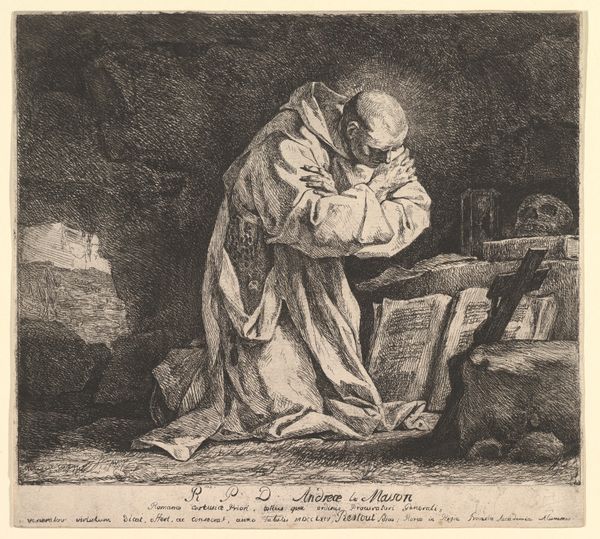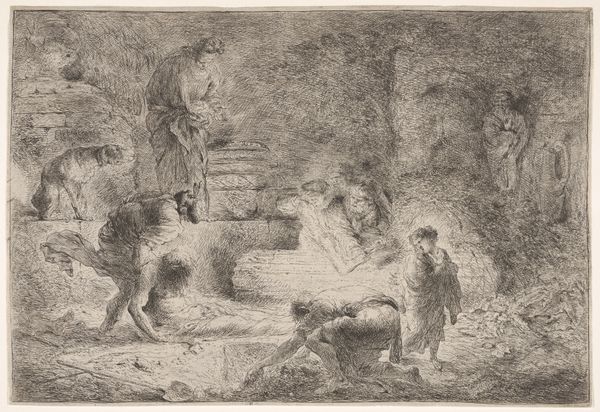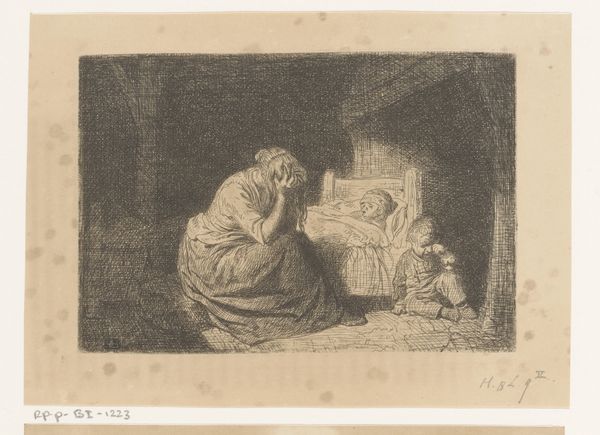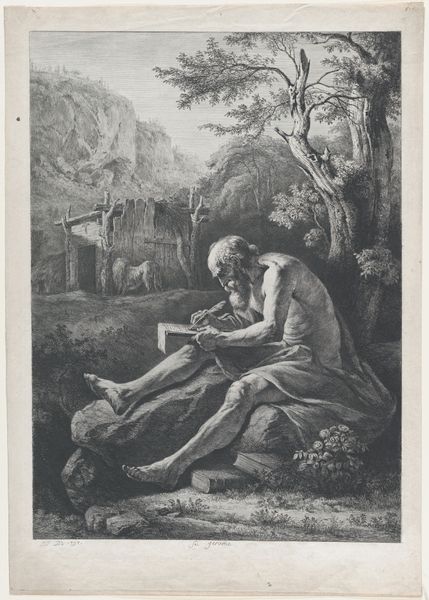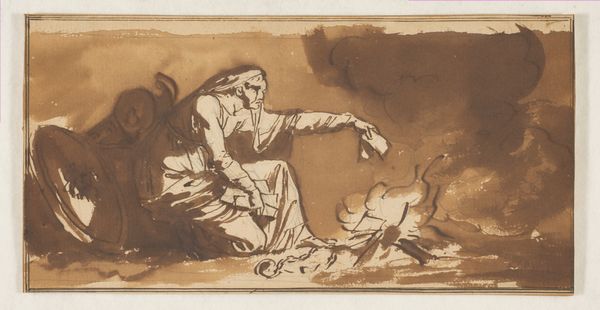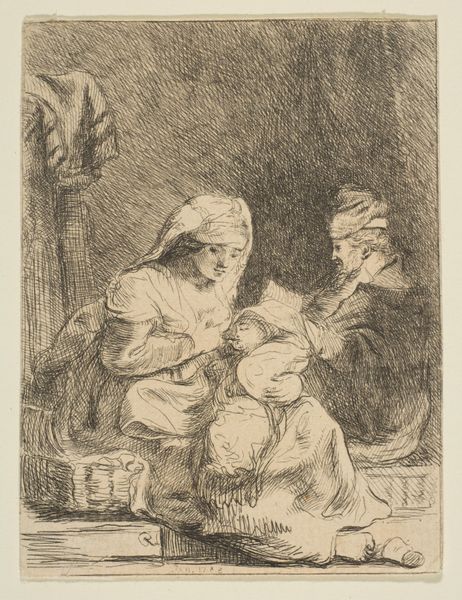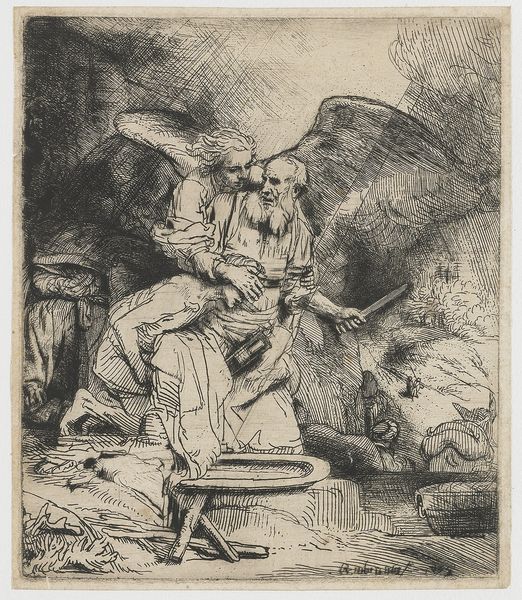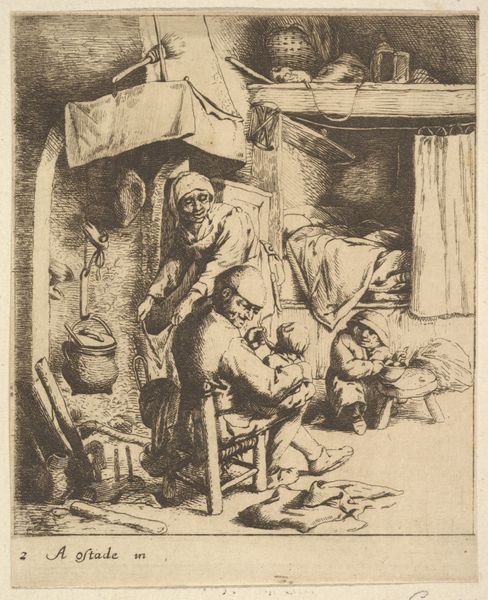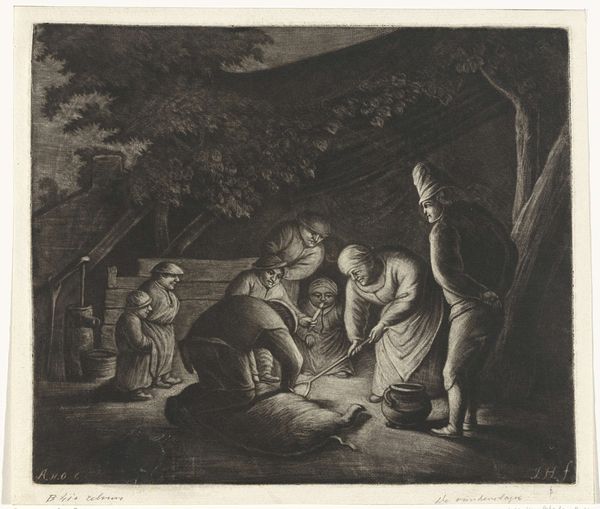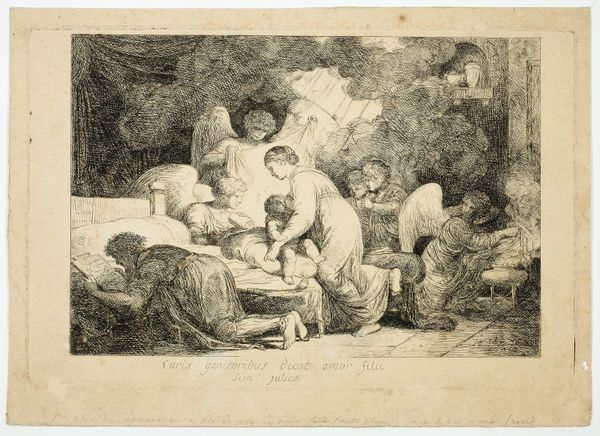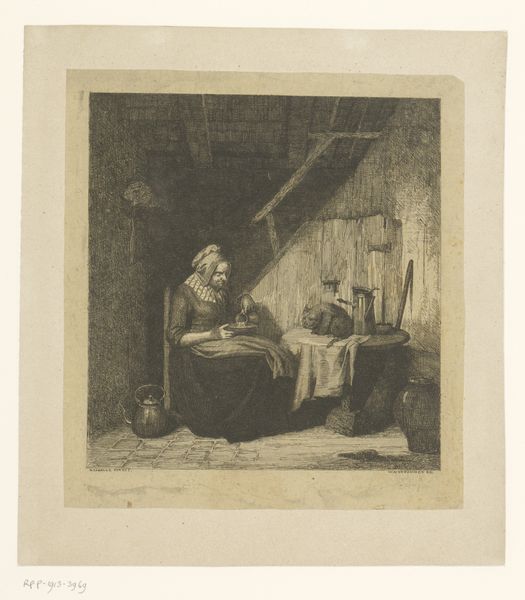
drawing, paper, ink, pencil
#
pencil drawn
#
drawing
#
16_19th-century
#
narrative-art
#
pencil sketch
#
figuration
#
paper
#
ink
#
pencil drawing
#
pencil
#
genre-painting
Copyright: Public Domain
Curator: Welcome. We're looking at Hans Thoma’s “Witches' Kitchen” from 1870, a drawing executed in pencil and ink on paper, housed right here at the Städel Museum. Editor: It's a dark piece. A murky atmosphere pervades it. Even the line work feels anxious and hurried. Curator: Notice how Thoma uses hatching and cross-hatching to build depth and shadow, particularly around the titular kitchen. This creates a really fascinating dynamic between the subject and negative space. The composition is fairly centralized with a strong emphasis on horizontals, like the line of the floor, bisected by verticals – like the standing cat. Editor: And what is the subject, truly, but the historical persecution of women coded as ‘witches’? I see an embodiment of patriarchal fear. An elderly woman, relegated to the fringes, is performing alchemical experiments or perhaps simply trying to heal with folk remedies. We might want to think about what it meant to demonize those with traditional healing knowledge in the 19th century. Curator: Certainly. But look also at the balance in this sketch, how the bubbling cauldron mirrors the open book, hinting at parallel forms of knowledge, the practical and the theoretical, as both are rendered meticulously in the texture of ink on paper. Editor: I would contend the rendering serves to reinforce a power dynamic wherein one is ‘accepted’ and one, condemned. What of the other objects arrayed? Are they props in some grand symbolic performance? We must look critically at how narratives get constructed. The woman's garb could reflect regional clothing, her age perhaps poverty. All of these visual elements are heavy with social commentary. Curator: That interplay between light and dark—it seems Thoma found drama in these chiaroscuro effects, especially contrasted against the softer texture of the smoky background, which enhances that element of mystique that comes through in this figural work. Editor: Right, which really brings into focus that even in its supposed 'mystery' the figure of the "witch" here only functions as a projection of anxieties around women's knowledge, especially if that is seen as somehow outside of approved societal structures. The fact that she's laboring over a bubbling concoction underscores those gendered fears. Curator: I appreciate the layers in Thoma’s work and your observations provide a fresh frame. I always notice something new when I revisit this genre scene. Editor: And that's why interrogating these narratives is a must—art makes history visible. It urges us to contend with it, not to sanitize it.
Comments
No comments
Be the first to comment and join the conversation on the ultimate creative platform.
